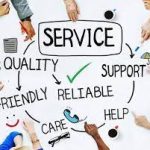
Trade shows are special events that bring together loyal customers, suppliers and dealers as well as media professionals and industry specialists for one purpose – usually around an event program with speakers and breakout sessions.
Managers must evaluate trade show opportunities against nonselling objectives such as image maintenance, intelligence gathering and new product testing. Although trade shows don’t directly contribute to selling activities, they still add significant value to marketing funnels.
Networking Opportunities
Trade shows are an ideal opportunity to network and establish new customer relationships, but you must first develop a strategy and goals for attending this type of event so you can make sure it fits with your business.
Determined by the length of the show, create a list of networking targets you intend to connect with during your stay there. Be prepared with an elevator pitch showcasing what your company does and why people should care – this will ensure that networking conversations go as smoothly as possible.
Be sure to follow-up with all your networking contacts after the show by sending short emails or postcards – this will reinforce your message and establish yourself as a reliable business partner. Also be sure to bring sufficient storage for all brochures, giveaway items and marketing collateral that was distributed.
Exposure to New Products
Your company has spent time and effort cultivating its social media following and receiving rave reviews on your website, yet you may be feeling like new business is stagnant. A trade show provides you with an opportunity to speak directly with prospective customers face to face about your product or service and establish lasting connections.
Your competitors provide you with an opportunity to see how other companies market their products, and to assess what works and doesn’t. If a competitor uses an engaging tactic that works well for them, perhaps you could adapt this into your marketing efforts as well.
Event Marketing Institute reports that 65% of attendees who attend events purchase products they saw there, creating an amazing opportunity for sales growth! Furthermore, having access to names, emails addresses and company information of potential clients makes follow up much simpler compared to traditional forms of advertising.
Brand Recognition
At a trade show, there are multiple ways you can generate brand recognition for your business. Social media platforms provide the ideal venue to publicize your presence at the event and draw people towards your booth; contests can also increase interest in your products and services at your booth; digital displays can relay important messages about them throughout the show; while touchscreen monitors and digital signs enable direct communications about them at events.
Attend seminars and presentations to stay abreast of emerging products and technologies within your industry, or observe competitors for product displays and marketing strategies.
Whatever your objectives may be for attending trade shows, it is critical that you plan ahead and set specific business goals that you hope to meet through participation. Doing so will enable you to develop an effective marketing plan designed to achieve those objectives and reap maximum benefit from attending. Our blog also has great tips on increasing ROI of trade show investments!
Test Drives
Experience is often the best way to know if a product will fit with your business, which is why trade shows often provide demo drives of new technology.
At this year’s Chicago Auto Show, licensed drivers can experience “Chicago Drives Electric.” Chevrolet, Chrysler and Ford vehicles will be on display along with electric models from ElectraMeccanica, Alfa Romeo and Vietnam’s VinFast EV models – as well as others!
Landscaping professionals often utilize trade show exhibits as a platform to test out software and other business systems they are considering for their company. You may encounter booths at these events that offer everything from GPS-guided equipment to cutting edge 3D design software; depending on the product these systems may help streamline workflow and expand business; by gathering attendee data at shows you can follow up with targeted communication based on interests or needs of attendees.












